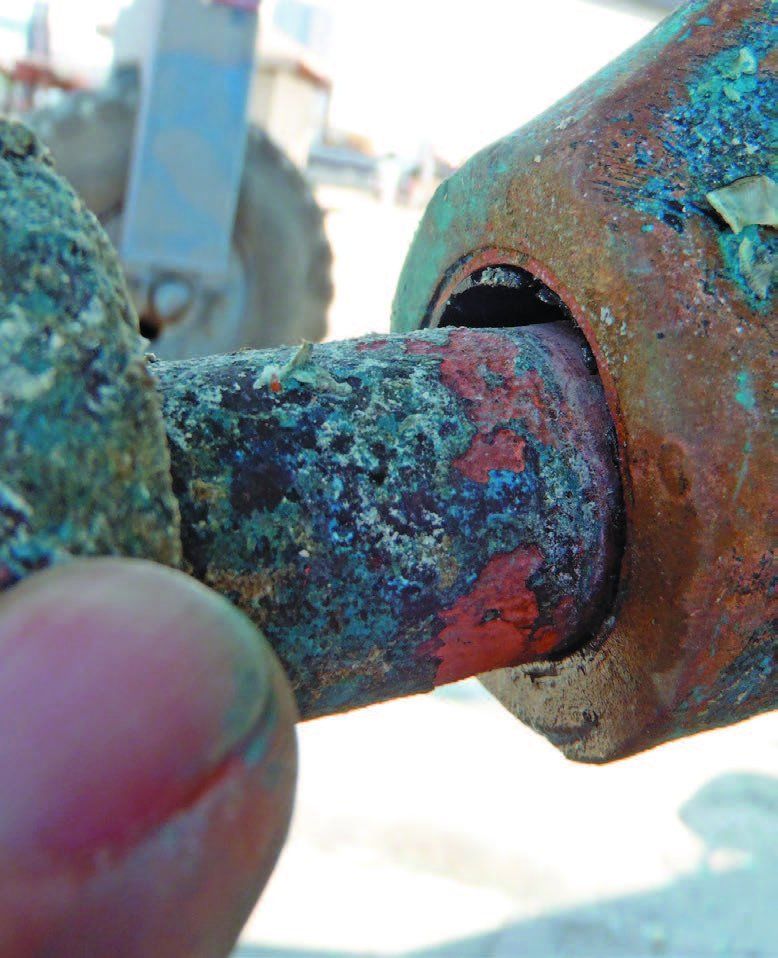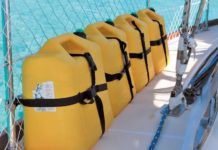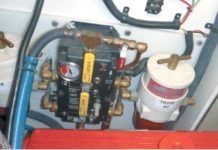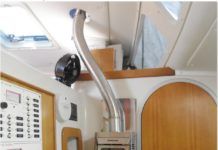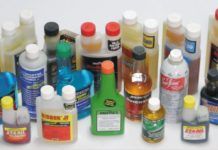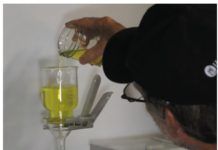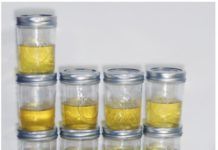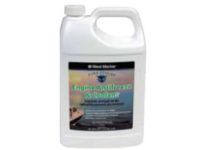Folding vs. Feathering Props
For the past 40 years we've sailed an average of 10,000 miles annually between Australia, Alaska, Antarctica and Spitsbergen motoring or motorsailing between 400 and 600 hours, depending on the area - more hours in high latitudes of Antarctica and the Arctic, fewer in the tropical trade winds.
Jerry Can Storage Tips
Jerry cans are a fact of life when cruising on small to mid-size cruisers. When fitting out our 37-foot cruiser for an extended trip from Lake Ontario to the Bahamas we supplemented our diesel tankage with four jerry cans for diesel and three gas cans to power the dinghy and run the water maker/generator.
Dealing with Bad Diesel
About this time of year, many of our readers will experience a gradual loss of engine power, maybe even a complete shut down. Theyll pull the filters and find them so clogged youd think the last fill-up was a spinach smoothie.
Playing it Safe with LPG Heat
Unlike many sailors, Practical Sailor contributor Drew Fryes version of sailing occurs in any weather where the water isn't frozen. So when his family purchased a used PDQ 32 catamaran six years ago, one of the first items on the To-Buy list was a cabin heater.
Additives vs. Gum, Sludge
If we used our boats like the family car, back and forth to work each day, fuel would never sit for more than a few weeks and it would never age. Instead, boats sit for weeks at a time in-season, and for months during the off-season. Water, oxygen, bacteria, metal ions, and even instabilities in the molecules themselves combine to turn fresh fuel into a soup that will clog filters, corrode fuel systems, and leave us stranded. Fuel refineries have long known this, and all products are dosed with inhibitors at the refinery; however, these dosages are calculated for the normal distribution and storage times, not half-full tanks that will sit for months or even years.
Testing Boat Fuel Stability in Diesel and Gasoline
We followed standard test methods for storage stability. Diesel was tested using ASTM method D 4625, Standard Test Method for Middle Distillate Fuel Storage Stability at 43C. Samples were exposed to air for up to two years at 113 degrees (45 degrees Celsius); each day simulated about four days of real-world storage, according to industry experience. We settled on 8 months of exposure, the equivalent of about three years. At the end of each period, samples were filtered, and the insoluble solids weighed.
Reduce Gasoline Evaporation in Boats with These Tips
Sometimes it is not what has been added to your fuel that matters, but what is missing. The most obvious difference between gasoline and diesel during our vented, fuel-aging tests was that gasoline samples evaporated and required replenishment at the mid-way point; diesel samples did not. Studies by BoatUS and the U.S. Environmental Protection Agency (EPA) have shown that anywhere between 5 and 20 percent of the contents of a portable or installed polyethylene gas tank can vanish in one year through evaporation and permeation. The remaining fuel is lower in octane, contains fewer of the volatiles that are so essential for easy starting, and has reduced solvency for gum and varnish. It often looks perfectly good-most of our samples did-but it is perfectly rotten and potentially harmful as fuel.
DIY Engine Oil Tests
Sailors obsess over the health of their engine; it is the heart of the boat (other than the rig, sails, and through-hulls). Failure is inconvenient, expensive, and even dangerous. And sailors love their maintenance, or so it seems. Anything that promises to ease the mind for a few dollars merits investigation.
Coolants that Fight Corrosion
Salt and water conspire to reduce our boats, our pride and joys, to pitted and unreliable money pits. Weve investigated corrosion of wiring (see PS July 2010 online), gasoline (see PS August 2012 online), diesel (see PS August 2013 online), and winterizing fluids (see PS September 2014 online), uncovering additives and practices that dramatically reduce deterioration and increase reliability. Engine cooling systems have similar vulnerabilities, and fortunately for us, the automotive engine manufacturers have invested millions in finding those solutions. However, the marketing materials don't always make the differences clear, and its hard to know which product is the best for your engine.
ASTM D1384 Serves as Model for Testers
Samples were tested for corrosion protection following the ASTM D1384 Corrosion in Glassware method (www.astm.org). Samples were diluted to 33-percent glycol, dosed with ASTM synthetic corrosive water (similar to 2-percent seawater), continuously aerated, and heated to 190 degrees for two weeks. As a laboratory control, a reference coolant (ASTM D 3585) was also exposed to provide a baseline.

































